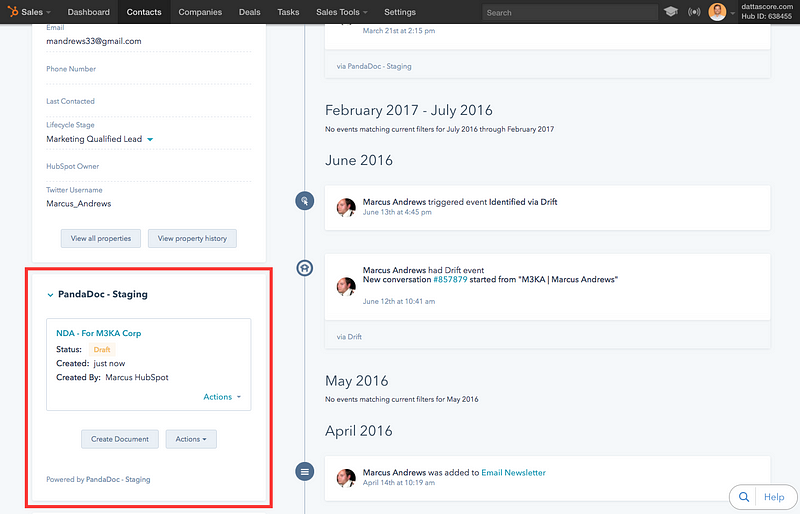Author: HubSpot
In one year, HubSpot doubled the number of certified partners in its platform ecosystem and increased the number of apps installed by customers by 142% — here’s why that matters.
We’re living in the golden age of marketing and sales technology. There are more than 5,000 marketing and sales technology vendors globally, all striving to help businesses to better find and delight customers in a digital world.
As a result, there’s no lack of cool and exciting software in this space. If you can imagine just about any creative new capability you’d like for engaging with your customers, there’s probably a martech startup out there somewhere building it.
The challenge, however, is figuring out how to get all these different tools to work well together — without needing a crack team of IT engineers to take months wiring them up. As Dr. McCoy from Star Trek might have protested, “Damn it, Jim, I’m a marketer, not a systems architect.”
This is the challenge that a centralized platform can solve.
What exactly makes a SaaS solution a “platform” instead of simply being a product?
Almost every SaaS product today has APIs that let it exchange data with other applications. A platform, however, plays a more active role in coordinating how multiple products work together. You can picture a platform as a hub, with spokes connecting other products to its center. The hub binds those disparate products together and orchestrates them in a common mission.
A platform creates a stable center of gravity in your marketing and sales stack by delivering three main benefits through a centralized:
1.Data Model. A platform does more than just exchange data with other apps in your stack. It establishes an organizing model for that data — for instance, a common identity and record structure for a lead, a customer, a deal, etc. It maps data from all the other apps connected to it into those common record formats, enforcing a baseline level of data quality. That centralized and well-structured database then serves as a shared “source of truth” for the platform and any other app that wants to tap into it.
2.Workflow and User Experience. Research has found that marketers and salespeople can lose a lot of time switching between different applications. A platform reduces that overhead by establishing a centralized “home base” where most users can do the majority of their work. In addition to providing a common view of shared data across apps, it also becomes the center of their workflow for most activities — especially if apps embed key features directly into platform’s user interface. Individual users might still log into other apps for more specialized tasks, but there’s much less day-to-day app switching across your organization.

3.Certification Authority. When you integrate apps on your own, you must take full responsibility for making sure that everything plays well together. A platform lifts some of that burden off your shoulders by establishing a trusted certification process for apps in its ecosystem. Certified apps will integrate smoothly, and you’re assured that they’ve been reviewed for a certain level of compatibility. A helpful directory of all certified appsmaintained by the platform company can also make it easier to find the right app to add whenever a particular need arises.
All of these factors help lower the organizational costs of adopting multiple products in your marketing and sales stack, by reducing friction in their selection, installation, and use.
The Growth Dynamics of Platform Ecosystems
To get a sense of how well a platform is doing at delivering those benefits, you can look at two key indicators of ecosystem health through growth of:
1.The number of apps installed by customers. If more platform customers are installing more certified apps, that’s one of the strongest signals that there’s real value in the ecosystem for them. If installing or using apps is difficult — or ultimately doesn’t achieve results — this metric stalls.
2.The number of certified apps. Quality matters more than quantity when it comes to a platform ecosystem. An app directory filled with a bunch of low-quality apps creates more confusion than clarity. But if the number of high-quality certified apps is growing, it’s a good sign that the platform dynamics are working for app developers too. A platform that makes it easier for businesses to successfully adopt more apps naturally attracts more developers.
By both of these measures, the HubSpot platform had a good year in 2017.
The number of apps installed by HubSpot customers on our platform increased 142%, and the number of certified apps in our Connect partner ecosystem grew by 108%.
The graphic at the top of this post illustrates what our platform ecosystem looks like here at the start of 2018. You can also browse our updated integrations directory to learn more about all the different capabilities these app developers have to offer. We’re anticipating further expansion in the year ahead.
While we still have much work to do — we aspire to build a truly lovable platform, and we hold that as a very high bar — we’re excited about the growing momentum in our ecosystem. But most of all, we’re delighted to see our customers getting measurable benefits from our platform by effectively integrating more specialized capabilities into their marketing and sales stacks.
That’s what really matters.
source: medium.com












